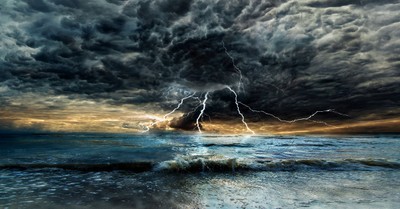Back to the Future…with Attitude
- Updated Jan 14, 2008
It all began with a New Year’s ball drop at Times Square. It will end with record-setting technology, epic events in Iran, and an ever-increasing sense of globalization.
2008?
No.
1908.
In his new book America 1908, Jim Rasenberger charts a year that began with the first New Year’s ball drop at Times Square and ended with the Wright brothers record-setting flight. In between came Henry Ford’s Model T, Robert Peary’s expedition to be the first to reach the North Pole, the first oil discovery in Iran, and the introduction of the word “melting pot.”
In a fascinating exploration, Rasenberger contends that in regard to the tumultuous times in which we live, “America’s wild ride began a century ago.”
USA Today took note of the uncanny reflections between 1908 and 2008 in their article on the book and its premise, “People rode subways and lit their homes with electricity. They drank Coke and Pepsi, shaved with Gillette razors and vacuumed with their Hoovers. They worried about the environment.” President Teddy Roosevelt said it was time “to inquire seriously what will happen when our forests are gone...the coal, the iron, the oil and the gas exhausted.”
There were, of course, obvious distinctions. In 1908, America was a collection of 46 states in which 90% of the people were white and more than half of the population lived in rural areas. States such as North Dakota and Montana were still open to homesteaders, and Arizona and New Mexico were still largely unsettled. Bill Cody, better known as “Buffalo Bill,” the personification of the Wild West, was only 57. Children worked in coal mines and steel mills, marriage between whites and blacks was illegal in 26 states, and anarchists terrorized large cities.
But that wasn’t the biggest distinction.
In 1908, despite facing many of the same challenges and concerns we face today, “what really excited Americans was the future.” It’s striking, Rasenberger writes, “how much more hopeful Americans were then than we are today.” A 1908 Harper’s Weekly asked, “Is it possible that at this very moment we are living in the dawn of the veritable Golden Age?”
America in 2008 would answer that question a bit different than those in 1908, to be sure. There is more concern about the future at the onset of this year than any since the turning of the millennium itself. Gas prices continue to surge, now 30% higher than they were a year ago, with oil topping $100 a barrel for the first time in recent weeks. Food prices, including basics such as milk and bread, are climbing. The sub-prime mortgage collapse has not only affected many homeowners, but it’s hit the economy like a rock thrown into a pond, with a ripple effect impacting banks, the construction industry, and the stock market. In fact, the stock market is off to its weakest start for a new year since 1983. The latest job report, released on January 4th, revealed that unemployment had risen to its highest level in two years, leading to increasing talk about a full-blown recession. Throw in a weak dollar against other currencies, an ongoing war in Iraq, and a year of presidential change, and we’re starting off the year with more anxiety than any other time in recent memory.
But as Rasenberger notes, perhaps it is due less to a different set of circumstances than a different outlook on life itself. Historian Richard Landes once noted that there are two ways to look at the unfolding of history as we approach its end – as roosters or owls.
“Roosters crow about the imminent dawn. Apocalyptic prophets, messianic pretenders, chronologists calculating an imminent doomsday – they all want to rouse the courtyard, stir the animals into action...Owls are night animals; they dislike both noise and light; they want to hush the roosters, insisting that it is still night, that the dawn is far away, that the roosters are not only incorrect, but dangerous.”
As authors Robert Clouse, Robert Hosack, and Richard Pierard wrote in the heat of millennium fever approaching the year 2000, reflecting on Landes’ contention, we “embrace the rooster’s call to action,” but we argue that “no one knows about that day or hour” (Mark 13:32).
They also reminded their readers of the scene from the final installment of J.R.R. Tolkien’s Lord of the Rings where Frodo and his servant, Sam, travel deep behind enemy lines on their mission to destroy the great ring. Overwhelmed by dire conditions and certain they are doomed, Frodo confides to Sam, “I am glad that you are here with me. Here at the end of all things, Sam.” However, “in the nick of time” tragedy turns to triumph for the pilgrims, “and the end of all things becomes a beginning.”
So 2008 might parallel 1908. I just hope it includes our attitudes.
James Emery White
Sources
Jim Rasenberger, America 1908: The Dawn of Flight, the Race to the Pole, the Invention of the Model T and the Making of Modern America (Scribner, 2007).
“America’s wild ride began a century ago: ‘1908’ records breakthrough year in history,” Rick Hampson, USA Today, Thursday, December 27, 2007, p. 7D. Read article at http://www.usatoday.com/life/books/reviews/2007-12-26-america-1908_N.htm.
Richard Landis, “On Owls, Roosters, and Apocalyptic Time: A Historical Method for Reading a Refractory Documentation,” Union Seminary Quarterly Review 49, nos. 1-2 (1996), as cited by Robert G. Clouse, Robert N. Hosack, and Richard V. Pierard, The New Millennium Manual: A Once and Future Guide (Baker, 1999).
Robert G. Clouse, Robert N. Hosack, and Richard V. Pierard, The New Millennium Manual: A Once and Future Guide (Baker, 1999).
J.R.R. Tolkien, The Return of the King (1968).


















